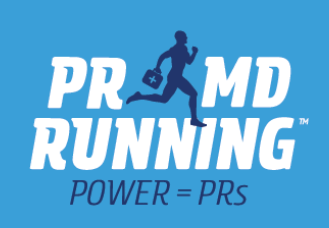Runners, from seasoned marathoners to those just getting their feet wet in the world of running, all share a common dread – the potential for injuries. Thankfully, the science of sports medicine has made incredible strides in recent years, providing us with a wealth of knowledge on how to prevent injury and keep up our mileage. Today, we're putting our best foot forward with a detailed look at running injury prevention tactics championed by none other than PR MD Running and the esteemed Dr. Kasey Hill, a leading name in the intersection of primary care and running health, based in the scenic Charlottesville, VA. Let's lace up and dive into strategies that will keep you on the track, trail, or treadmill, and away from the physiotherapist's couch.
The Anatomy of a Running Injury
First things first, it’s vital to understand what we're up against. Running places significant stress on your body, especially when you ramp up the mileage, intensity, or speed. Common injuries include plantar fasciitis, shin splints, runner’s knee, Achilles tendinitis, and stress fractures – all of which are often the result of overuse, improper training techniques, or insufficient recovery.
As part of its approach, PR MD Running and Dr. Kasey Hill employ the latest diagnostic tools and thoughtful assessment to understand the connection between a runner’s mechanics, inherent biomechanical vulnerabilities, and the environmental factors that may lead to injury. This personalized approach is a game-changer, as it shines a light on the unique needs of individual runners and equips them with tailored preventative strategies.
S.M.A.R.T. Training
Running injuries often occur when we push our limits too hard and too fast. The team at PR MD Running stands by the S.M.A.R.T. principle - Specific, Measurable, Achievable, Relevant, and Time-bound.
- Specific: Set clear and precise goals for your training that align with your current fitness level and the races you’re targeting.
- Measurable: Track your progress with a running log, fitness app, or wearable device to ensure that you're steadily and safely increasing your workload.
- Achievable: Be realistic about your goals; remember that a marathon can be a long way. It's okay to start with shorter distances and build up over time.
- Relevant: Ensure that your training is pertinent to your race goals. Your regimen should reflect the demands of the race you're preparing for.
- Time-bound: Have a training schedule that outlines when and how you'll progress towards your goals while factoring in periods of rest and recovery.
Wear the Right Shoes
Footwear is your front line of defense against many common running injuries. Dr. Kasey Hill emphasizes the importance of wearing shoes that are specifically designed for running and suited to your individual needs.
Invest in a high-quality pair of running shoes that offer appropriate support, cushioning, and are tailored to your running gait.
Consulting with a professional at a specialty running store can be enlightening. They can perform gait analyses and recommend the best shoe for the way you run. Be mindful of the mileage on your shoes, as worn-out soles can significantly impact your running mechanics and lead to injury.
Cross-Train and Strengthen
Running may be your passion, but cross-training and full-body strength are the unsung heroes of injury prevention. By incorporating activities like swimming, cycling, yoga, and weight training into your routine, you nurture a body that's better equipped to handle the rigors of running.
Dr. Kasey recommends a balanced approach to exercise that includes strength training for the core, hips, and glutes. These muscle groups play a critical role in stabilizing your body, optimizing your running form, and preventing imbalances that could result in injury.
Nutrition and Hydration
Think of your body as a finely-tuned car and food as the fuel. Without the right energy and nutrients, it's nearly impossible to perform at your best and recover properly. Dr. Kasey Hill’s nutritional counseling ensures that runners are supplied with evidence-based guidance on maintaining a diet that supports their training.
A diet rich in carbohydrates, healthy fats, and proteins is essential to meet the increased energy demands of a running regimen. Hydration is equally important; adequate water intake and the replacement of electrolytes are vital to quenching your body's thirst for performance and recovery.
Rest and Recovery
Rest is where the magic of running really happens. This is the time when your body repairs itself and grows stronger. Ignoring rest can lead to overtraining, burnout, and potentially debilitating injuries.
Dr. Kasey Hill advocates for a recovery plan that includes regular rest days, sleep, and active recovery measures such as foam rolling, stretching, and massage. Additionally, he suggests factoring in periodic down weeks into your training plan, where you decrease mileage to allow for extensive recovery without losing fitness.
Listen to Your Body
Sometimes, the best way to prevent an injury is to stop. Don’t push through pain or discomfort; it’s often your body’s way of signaling that something isn’t quite right.
Dr. Kasey’s approach encourages runners to become experts of their own bodies. Keep an ear to the ground – or pavement – and be proactive about seeking help when you notice something amiss. A change in your running form, consistent pain, or increased fatigue can all be early indicators of potential injury.
Long Term Mindset
Running is not about a single event or goal; it’s a lifestyle. Adopting a long-term mindset can help prevent injuries by making wise decisions about training, recovery, and health.
Injury prevention should become as routine as lacing up your running shoes. By integrating these principles into your training, you not only reduce your risk of injury but also set the stage for longevity and continued improvement in your running endeavors.
In Conclusion
Running injuries are not a question of 'if' but 'when' without proper preparation and care. By implementing strategies from PR MD Running and Dr. Kasey Hill, you're not just aiming for the finish line; you're setting the foundation for a sustainable and fulfilling running journey. Whether you're gearing up for your next 5k or your ultimate marathon, remember that taking preventative measures is as important as logging your miles.
Running is an expression of freedom, a means to push personal boundaries, and a path towards self-improvement. Let’s ensure that every step we take brings us closer to our goals and away from the sidelines due to an unfortunate injury. With PR MD Running and Dr. Kasey Hill’s wisdom, you're empowered to hit the pavement with confidence and the best shot at running injury-free for life.

